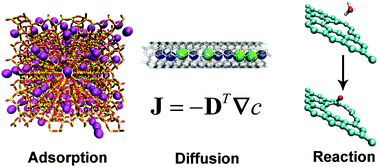Molecular modeling at the electronic and atomistic levels plays an important and complementary role to experimental studies of confinement effects. Theory and atomistic simulation can provide fundamental understanding, determine the limits of well known macroscopic laws such as Kelvin's equation, provide predictions for systems that are difficult to study via experiment (e.g. adsorption of highly toxic gases), and can be used to gain detailed molecular level information that may not be accessible in the laboratory (e.g. the local structure and composition of confined phases). We describe the most important and useful methods that are based firmly on quantum mechanics and statistical mechanics, including ab intio and classical density functional theories, and Monte Carlo and molecular dynamics simulation. We discuss their strengths and limitations. We then describe examples of applications of these methods to adsorption and equilibrium properties, including testing the Kelvin equation, determination of pore size distributions and capillary phenomena. Applications to self and transport diffusion, including single-file and anomalous diffusion, and viscous flow in nanoporous materials are described. The use of these methods to understand confinement effects on chemical reactions in heterogeneous media is treated, including effects on reaction equilibria, rates and mechanism. Finally we discuss the current status of molecular modeling in this area, and the outlook and future research needs for the next few years. The treatment is suitable for the general technical reader.

You have access to this article
 Please wait while we load your content...
Something went wrong. Try again?
Please wait while we load your content...
Something went wrong. Try again?


 Please wait while we load your content...
Please wait while we load your content...